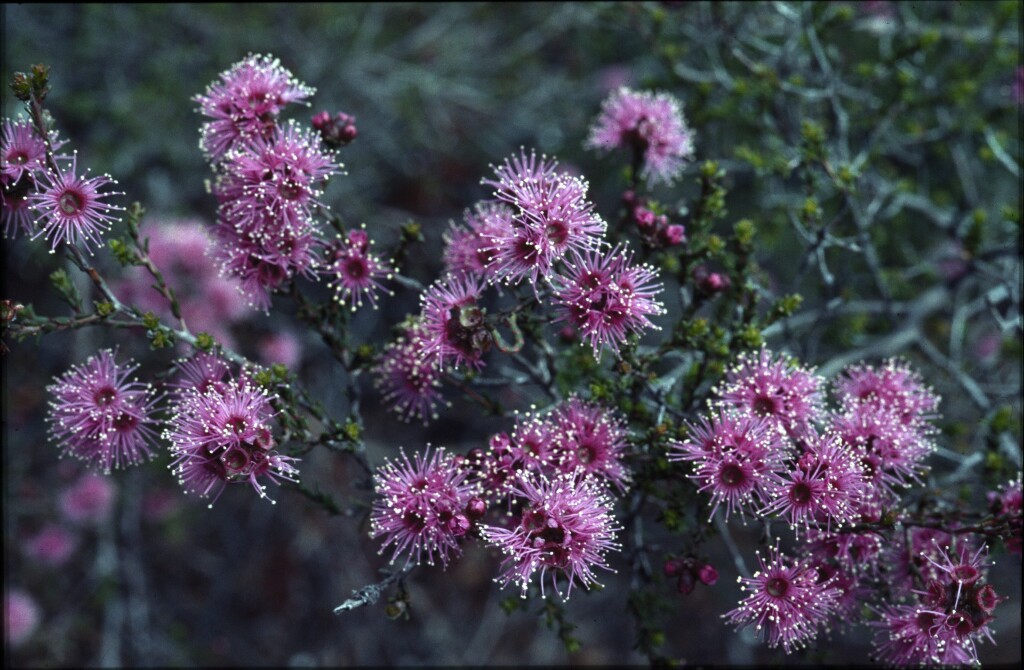Kunzea parvifolia
Schauer Violet KunzeaErect, wiry shrub to 0.5–1.5 m high, rarely more; young stems pubescent. Leaves alternate, linear-lanceolate to oblong, crowded, more or less appressed to stems, 1–4 mm long, 0.75–1 mm wide, obtuse, pubescent when young, becoming glabrous; apex recurved; margins entire; petiole to c. 0.5 mm long. Flowers pink to purple, sessile, in terminal head-like clusters; floral bracts acute, villous; hypanthium glabrous or villous; sepals brownish, triangular, c. 1 mm long; petals orbicular, 1.5–2.5 mm diam.; filaments pink or purple, 2–4 mm long, anthers creamy-yellow; style 2.5–5 mm long; ovary 3-celled. Fruit c. 2 mm long, c. 2–2.5 mm diam., not woody, dehiscent by terminal valves. Flowers Oct.–Dec.
MuM, Wim, GleP, VVP, VRiv, GipP, CVU, GGr, DunT, NIS, EGL, EGU, HSF, HNF, MonT, VAlp. Also Qld, NSW, ACT. In Victoria found mainly in the north-east but with isolated western records from the Grampians and Mt Cole. Often grows along seepage lines on rocky slopes.
Hybrids with Kunzea peduncularis occur in the Burrowa-Black Mountain area in the far north east.
Jeanes, J.A. (1996). Myrtaceae. In: Walsh, N.G.; Entwisle, T.J., Flora of Victoria Vol. 3, Dicotyledons Winteraceae to Myrtaceae, pp. 942–1044. Inkata Press, Melbourne.
 Spinning
Spinning
